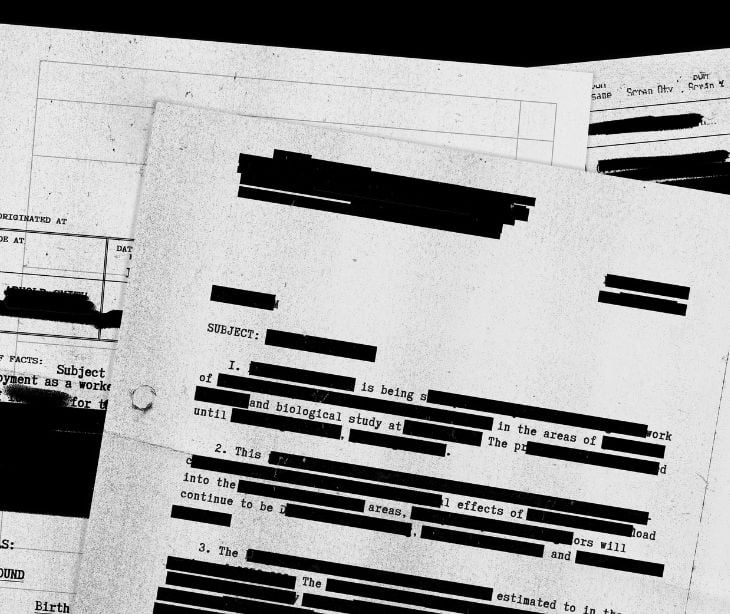
PHI redaction is the practice of concealing or removing specific patient information, like names and addresses, from healthcare records to protect patient privacy. This supports HIPAA compliance by ensuring that sensitive data is hidden, minimizing unauthorized access, and reducing the risk of data breaches.
What is PHI redaction?
PHI redaction refers to concealing or removing specific elements of protected health information (PHI) from healthcare documents and records. HIPAA defines PHI as "all "individually identifiable health information" held or transmitted by a covered entity or its business associate, in any form or media, whether electronic, paper, or oral.". This process ensures that only those who need access to this information can view it. That effectively safeguards patient confidentiality.
Related: What are the 18 PHI identifiers?
How does PHI redaction work?
- PHI redaction starts with identifying the elements that constitute PHI, including patient names, addresses, Social Security numbers, medical record numbers, and more.
- Once identified, these elements are redacted using various methods, such as blacking out text, replacing it with placeholders, or using specialized software tools that automate the process.
For example, imagine a patient's medical record that includes their name, date of birth, diagnosis, and treatment plan. In a redacted version of this record, the patient's name, date of birth, and other identifying information would be obscured, leaving only the medical and treatment details visible. This ensures that the patient's identity and sensitive information are protected while allowing healthcare professionals access to the clinical data.
HIPAA compliance and PHI redaction
PHI redaction aligns with HIPAA regulations by addressing these concerns:
- Protection of patient privacy: PHI redaction covers patient identities and sensitive information, ensuring that unauthorized individuals cannot access this data.
- Minimization of unauthorized access: Redaction minimizes the risk of unauthorized personnel viewing or using patient information by concealing PHI. That ensures that healthcare professionals, insurers, and other authorized individuals access the necessary information while preventing unnecessary exposure.
- Data breach prevention: The process reduces the risk of data breaches or accidental exposure of PHI, thereby reducing potential legal consequences.
Benefits of proper PHI redaction
Implementing effective PHI redaction practices brings numerous benefits:
- Confidentiality: Patients can trust that their personal information remains confidential, promoting a sense of trust in their healthcare providers. This trust can maintain strong patient-provider relationships.
- Controlled information sharing: Healthcare professionals can share necessary information without compromising patient privacy. For instance, when collaborating with specialists, sharing patient records with only relevant information ensures the receiving party has the data required for treatment without exposing the entire medical history.
- Support for auditing and compliance: Properly redacted documents show how PHI was handled, facilitating audits and compliance checks. In the event of an audit or regulatory investigation, having well-documented redaction processes and records can demonstrate a commitment to compliance and data security.
Challenges and considerations
- One challenge is the potential for human error during the redaction process. Even with automated tools, you must conduct a manual review to verify that sensitive information has been concealed and that no unintended disclosures have occurred. A single oversight could lead to a data breach or HIPAA violation.
- Additionally, healthcare organizations must consider the balance between privacy and information sharing. While protecting patient privacy is paramount, it's equally essential to ensure authorized personnel can access the necessary information for patient care, billing, and other legitimate purposes.
How to ensure that PHI Redaction is effective
- Identify all PHI: Thoroughly identify all PHI elements within documents. Ensure that everyone involved in the redaction process understands what constitutes PHI to avoid oversight.
- Use reliable tools: Employ reliable software tools or redaction services for efficiency. Automated redaction tools can help streamline the process and reduce the risk of human error but should be used in conjunction with manual review.
- Manual review: Always conduct a manual review to confirm accurate redaction. Automated tools are valuable but not infallible. A manual review is the final line of defense to ensure that no sensitive information is unintentionally exposed.
- Training and awareness: Train healthcare professionals on PHI redaction best practices. Regular training and updates ensure that staff remains informed about the latest redaction techniques and regulatory changes.
FAQs
Can redacted PHI still be used for research purposes?
Yes, once PHI is properly redacted, it can be used for research without violating HIPAA, as the data is no longer identifiable.
Are redacted documents still considered medical records?
Redacted documents remain part of the medical record, but they are modified versions meant for restricted sharing while protecting patient privacy.
Can audio or video recordings contain PHI that needs redaction?
Audio and video recordings can contain PHI, and sensitive identifiers such as names, addresses, or medical details must be redacted from these formats to maintain HIPAA compliance.
Subscribe to Paubox Weekly
Every Friday we'll bring you the most important news from Paubox. Our aim is to make you smarter, faster.




